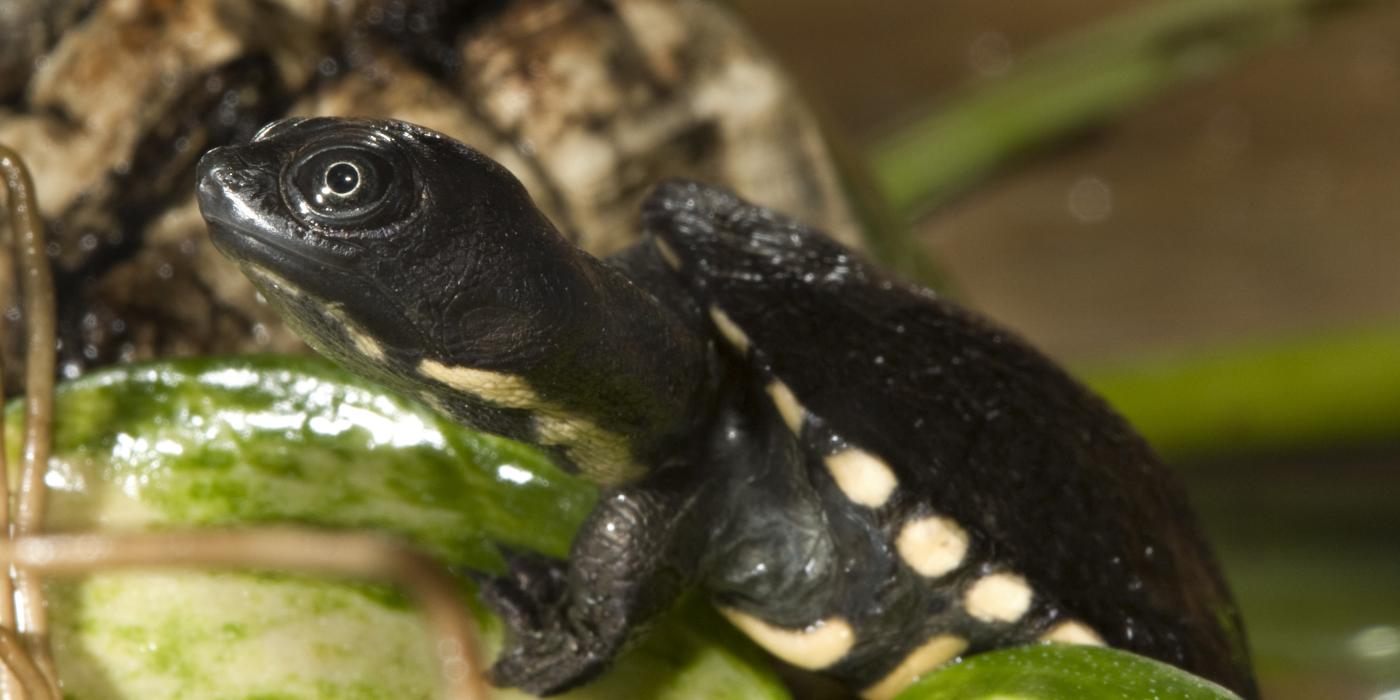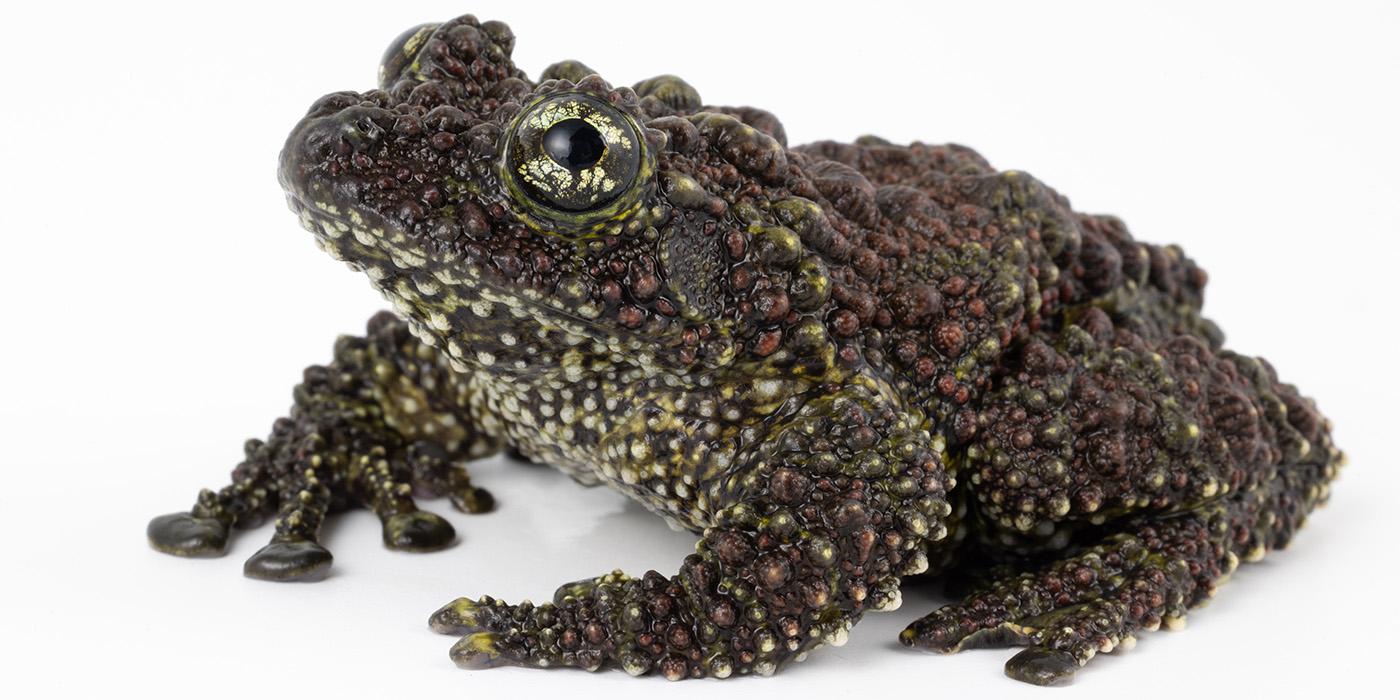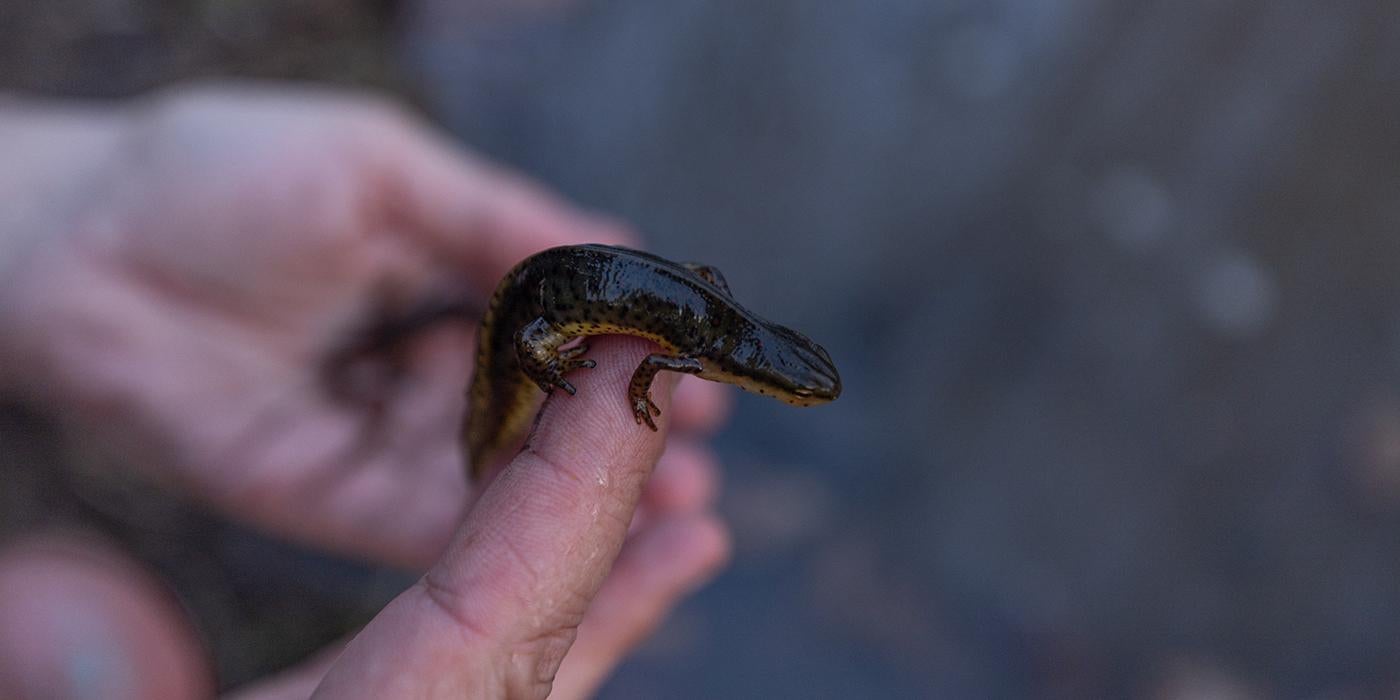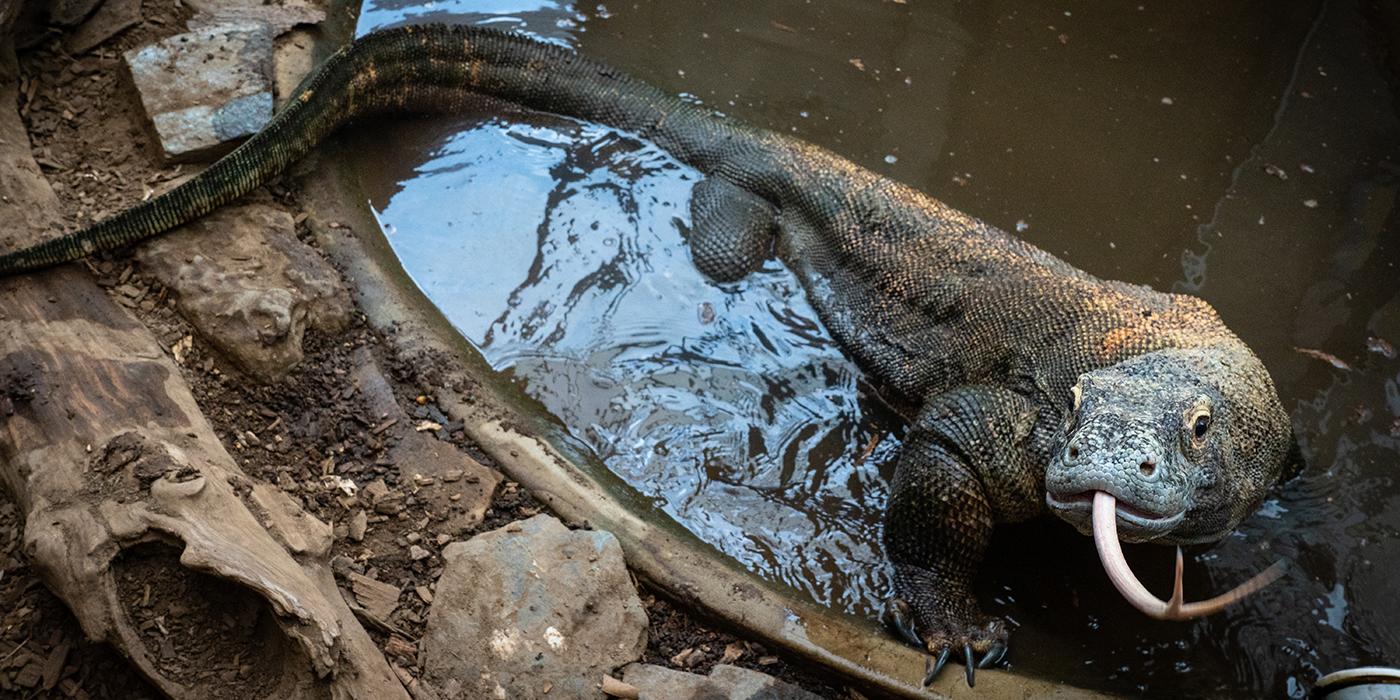These Teeny, Tiny Turtle Hatchlings Fit in the Palm of Your Hand
Snake-necked turtles look like creatures from fantasy—they’re a little weird and a little whimsical, but they’re beautiful, too. Visitors of all ages get a big kick out of these odd turtles. They are active and interactive. They spend much of their day swimming throughout their exhibit, but when you stop to observe them, they flock to the glass, crowding around to watch you.
Last October, our Reptile Discovery Center team welcomed four snake-necked turtle hatchlings, the species’ first offspring at the Zoo in 9 years. When they emerged from their shells between Oct. 13 and 20, they were the size of a quarter and weighed about 3 grams. All four could easily fit in the palm of my hand.
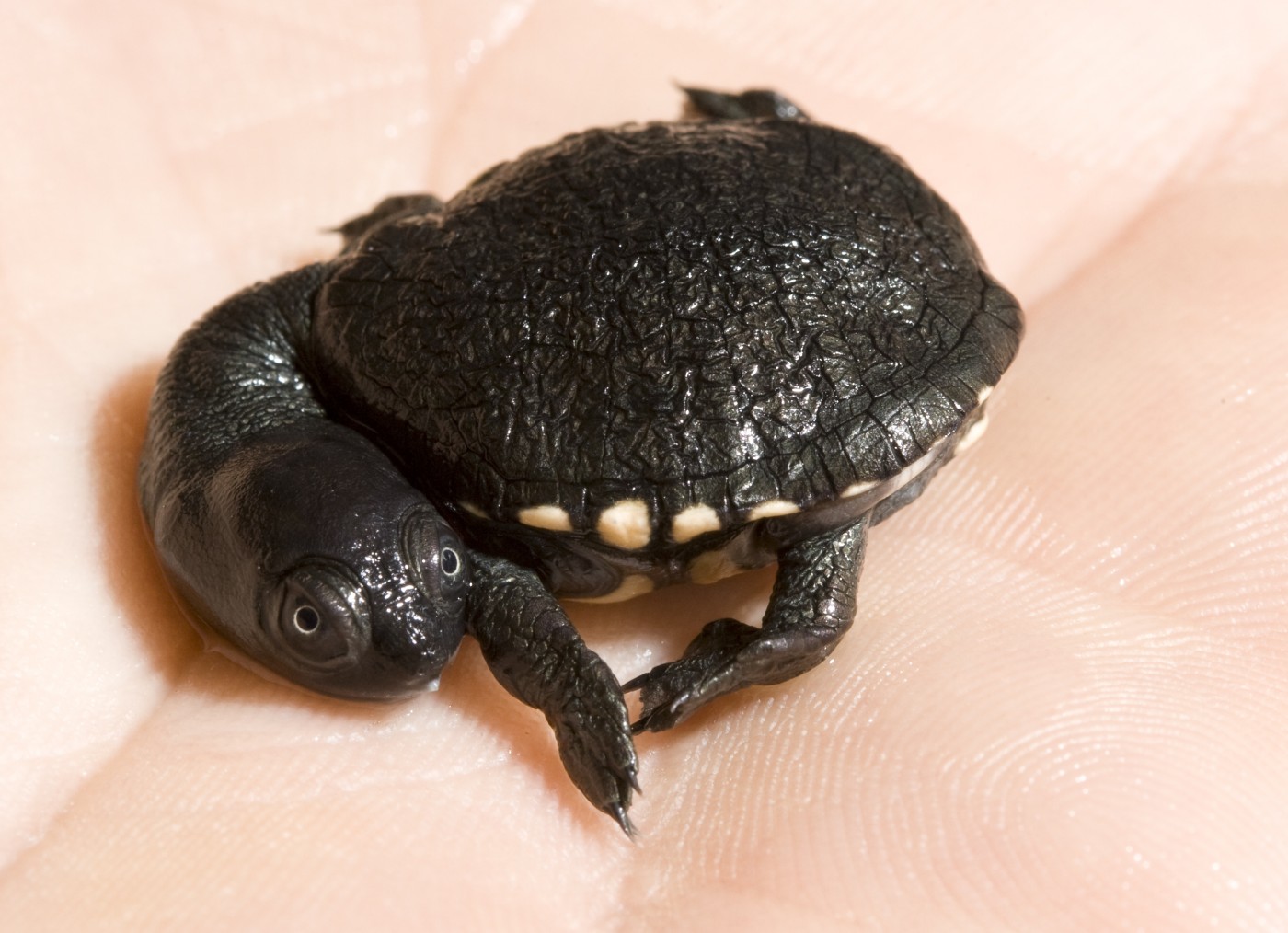
We didn’t expect to find eggs in the enclosure one day, as we thought the 11 snake-necked turtles housed off-exhibit were female. Usually, aquatic turtles sport characteristics that help us differentiate males from females, such as longer nails and thicker tails. With snake-necked turtles, it is much harder to tell who’s who. All look similar in appearance. Females typically weigh 600 grams and above, and males tend to be smaller, weighing-in at less than 500 grams. In our group, however, the smallest adult male tips the scales at 560 grams.
Female snake-necked turtles lay their eggs on dry land. In the wild, flooding can help trigger the offspring to hatch. Similar to sea turtles, the young make their way to the water quickly.
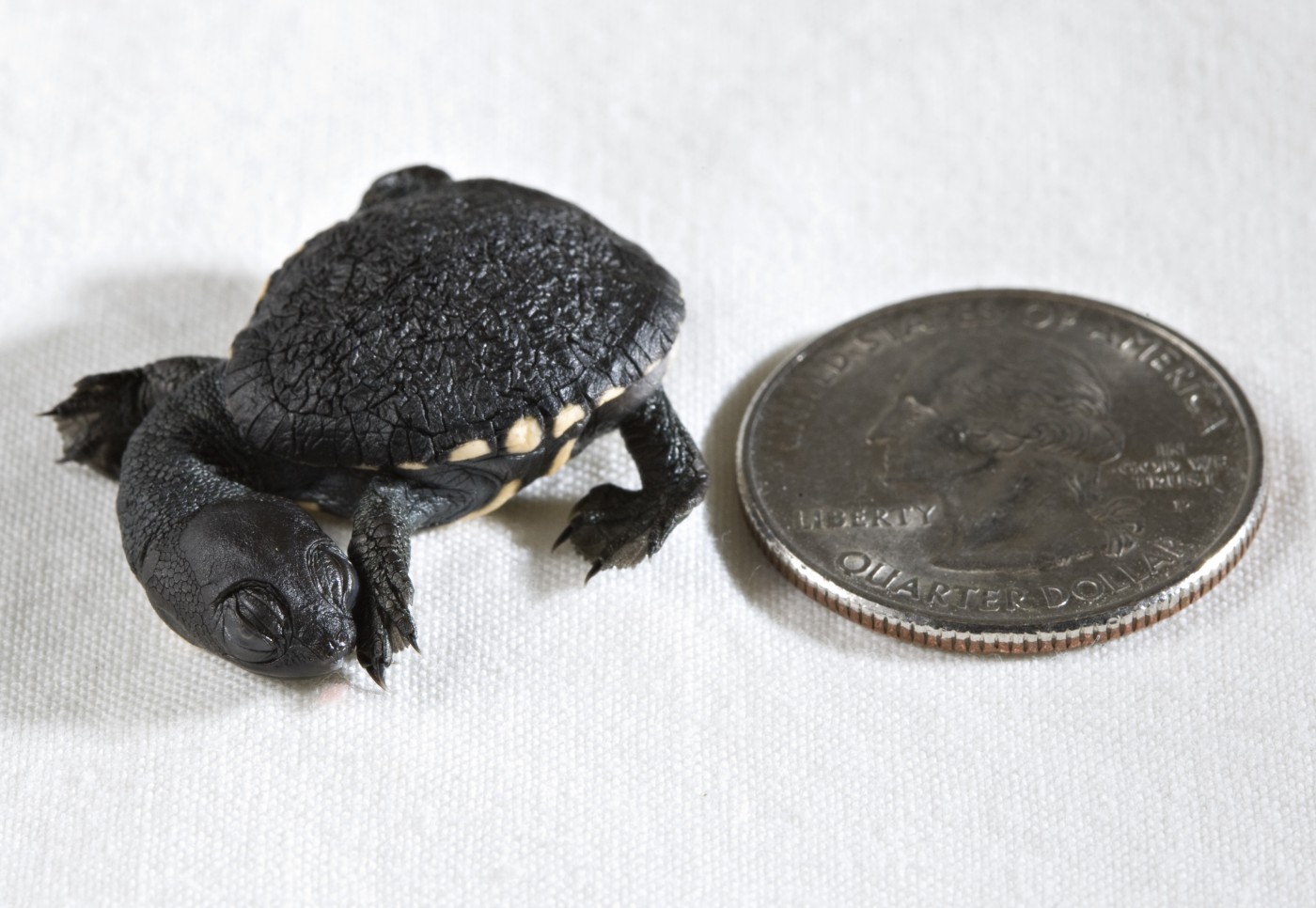
At the Zoo, however, we incubate them in an off-exhibit area. Still, it is not uncommon for this species to lay infertile eggs. Around day 30, we candled (shined a light into) the eggs and saw blood vessels—a sure sign of life. Between 70 and 85 days after the female laid her eggs, they hatched.
Neither parent provides any care for their offspring. Hatchlings are keenly aware of their surroundings, and for good reason. They are so small that they would be easy prey. To survive, they spend most of their time hiding. Unlike our older snake-necked turtles, these little guys are quite shy. Even though there is no risk of running into predators at the Reptile Discovery Center, we provide them with plenty of plants and green cover to encourage this natural behavior.
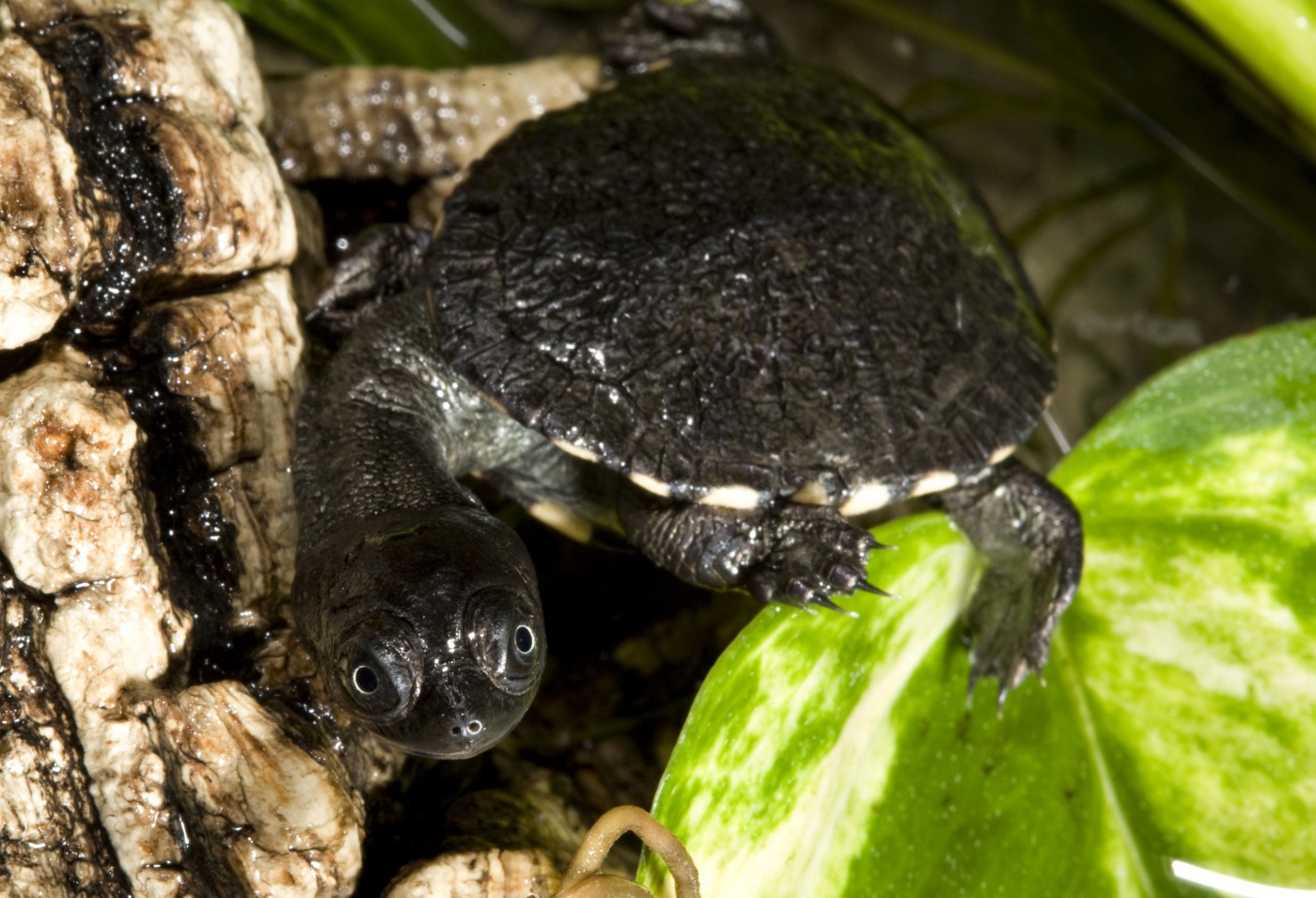
Currently, all four siblings live together. When they become more confident and bold, they will be able to hold their own against the adults at mealtime. For now, they only have to compete with one another, so the odds are in their favor. We sprinkle food throughout the hatchlings’ habitat to give each individual a chance to forage.
Youngsters receive the same diets as the adults, just in smaller portions. To prepare their meal, we cut up earthworms into small, bite-sized portions, and give them live prey to hunt, including tiny crickets and blackworms. They also receive pellets which are fortified with vitamins and nutrients, but they don’t gobble them up nearly as quickly as they do protein-based items.
Because they are so shy, it can be difficult to observe the hatchlings eat. Often, I have to stand back and hide somewhere they cannot see me! We weigh them periodically and, so far, everyone is making good gains. In three months they have doubled their weight to 6 grams.
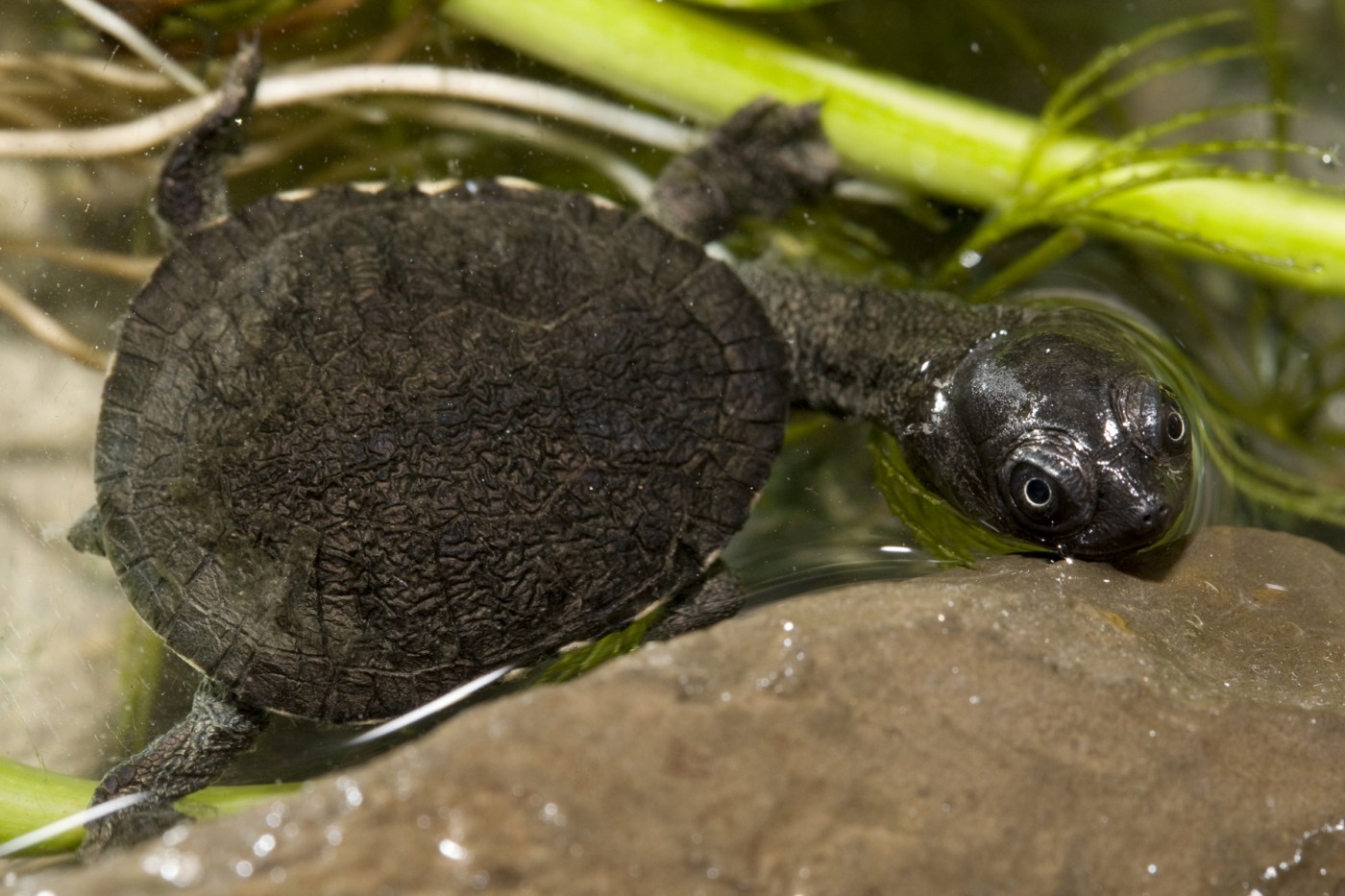
Snake-necked turtles have many admirable qualities, not the least of which is the long, slender neck for which they are named. It is an amazing adaptation that allows them to come up for air at the water’s surface while remaining mostly submerged.
A fun fact about all turtles is that their feet are indicative of where they live. If they have flippers, they spend most of their time in the water. Webbed feet signify that the turtle can live both on water and on land. And, if their feet are flat with long claws, they are terrestrial. During your next visit to the Zoo, take a close look at our snake-necked turtles’ feet—you’ll notice they are webbed!
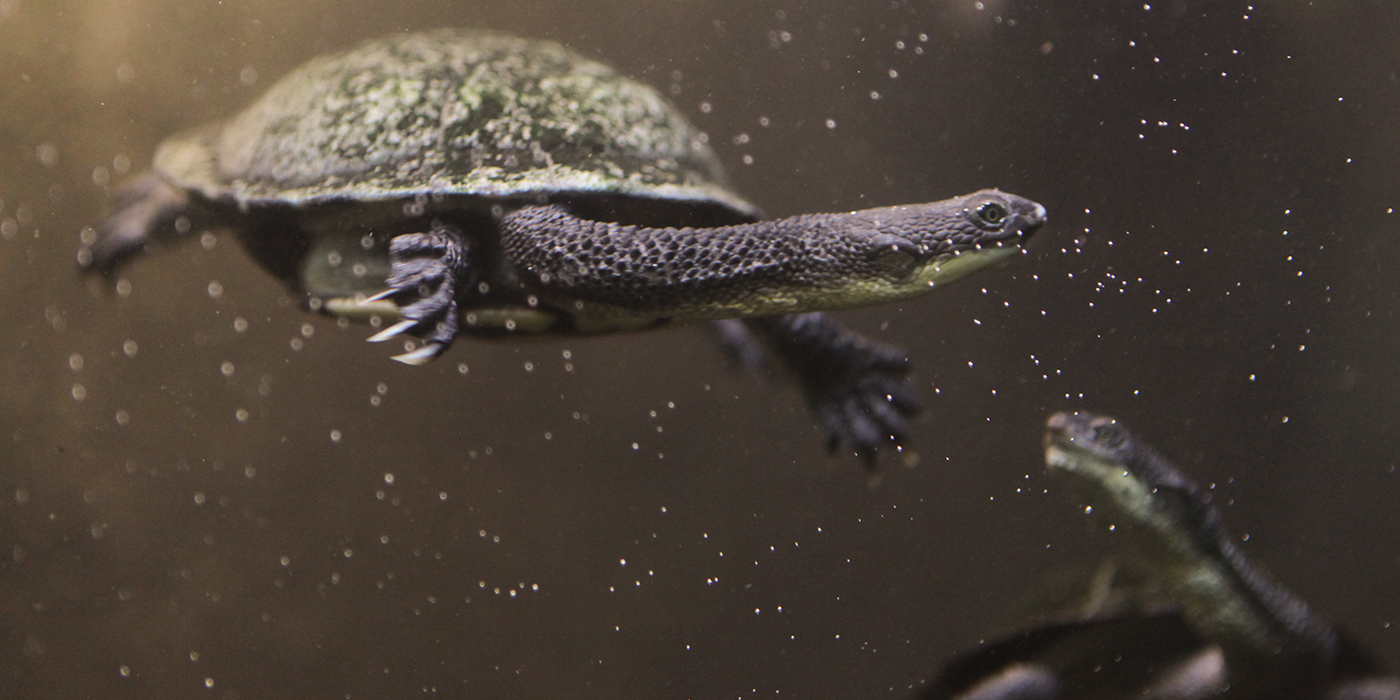
I love turtles! How can I help them?
When I talk with visitors, they often tell me how surprised they are to find turtles in their backyards. The truth is, turtles have been living in our neighborhoods long before we were. Eastern box turtles, which are native to the Washington, D.C., region, can live to be more than 100 years old. They know the best spots to find food and where to hibernate.
Often, turtles are especially active after it rains. If you see one trying to cross the road, give it a helping hand. If you can do so safely, pick it up, put it down and point it in the direction it was going. The turtle can take it from there.
If you come across a turtle in your neighborhood, resist the urge to “rescue” it. Providing these animals with a proper habitat, diet, enrichment and veterinary care is a decades-long commitment. The best thing you can do when you come across wildlife is leave it in the wild. Of course, the Zoo is one of the best places around to see turtles from all over the world. We hope you’ll stop by and say hello to our animal ambassadors—especially our snake-necked turtles!
This story appears in the February 2022 issue of National Zoo News. Can’t get enough of cold-blooded creatures? Check out more noteworthy news about the Zoo’s reptiles and amphibians!
Related Species:

